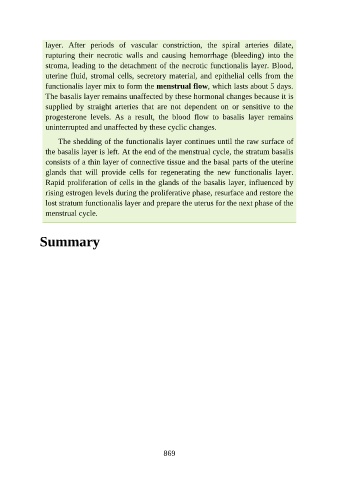Page 870 - Atlas of Histology with Functional Correlations
P. 870
layer. After periods of vascular constriction, the spiral arteries dilate,
rupturing their necrotic walls and causing hemorrhage (bleeding) into the
stroma, leading to the detachment of the necrotic functionalis layer. Blood,
uterine fluid, stromal cells, secretory material, and epithelial cells from the
functionalis layer mix to form the menstrual flow, which lasts about 5 days.
The basalis layer remains unaffected by these hormonal changes because it is
supplied by straight arteries that are not dependent on or sensitive to the
progesterone levels. As a result, the blood flow to basalis layer remains
uninterrupted and unaffected by these cyclic changes.
The shedding of the functionalis layer continues until the raw surface of
the basalis layer is left. At the end of the menstrual cycle, the stratum basalis
consists of a thin layer of connective tissue and the basal parts of the uterine
glands that will provide cells for regenerating the new functionalis layer.
Rapid proliferation of cells in the glands of the basalis layer, influenced by
rising estrogen levels during the proliferative phase, resurface and restore the
lost stratum functionalis layer and prepare the uterus for the next phase of the
menstrual cycle.
Summary
869

